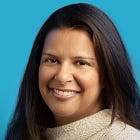This article is part of Fintech Leaders, a newsletter with almost 70,000 builders, entrepreneurs, investors, regulators, and students of financial services. I invite you to share and sign up! Also, if you enjoy this conversation, please consider leaving a review on Apple Podcasts or Spotify so more people can learn about us.
David Fortunato is the CEO of Wealthfront, an asset management giant with over $70 billion in assets under management and over a million clients.
Founded by Andy Rachleff almost 15 years ago, Wealthfront is now one of the most defining financial brands for millennials and Gen Zers. David joined the company in 2009 as a junior software engineer and became CEO almost four years ago.
Full disclosure, I enjoyed getting to know the team so much, that I opened my Wealthfront account as I was leaving their office.
In this episode, we discuss:
Building a culture of engineers and automation
“People say culture defines a company, but one of the things that I think helps to define culture is business model. And our business model was always built with the idea of building an automated financial solution.”
From day one, half of Wealthfront has been comprised of engineers. The leadership of the company has deliberately maintained a 1:1 ratio of engineers to non-engineers, not only as a cultural choice but also as a necessity, aligning with the company's business model to automate services, reduce costs, and deliver at scale. Engineers at Wealthfront are empowered, and David is the walking example of this statement – having started at the company as a junior engineer and then risen all the way to CEO. There is an internal expectation for Wealthfront engineers to invest in automation whenever they encounter manual tasks. The philosophy of proportional investment encourages spending even more time automating tasks based on the company’s growth trajectory, ensuring long-term efficiency gains as client numbers increase.
Product expansion strategies
“A lot of companies look at client contact as a cost. We look at it as an input to our roadmap that helps us prioritize to deliver better for our clients and be more efficient.”
Can you find product market fit before launching a product? Wealthfront tries to get as close as possible to this. They only move forward with product ideas that elicit strong, enthusiastic responses from clients during the development or mock-up phase, where they show customers potential products that make customers eager—almost desperate—to use them immediately, using that as a key determinant of product viability. Related to this, Wealthfront operates without a sales team and maintains a relatively low marketing spend. David attributes this lean approach to building products that are so intuitive and attractive to clients that they "reach across the table" for them, relying on organic demand and resonance rather than aggressive marketing.
Fortunato emphasizes a portfolio approach to product development, splitting resources between exploring new initiatives (at least 40%) and optimizing existing products (also 40% minimum). This balance can lead you to continuously improve offerings while staying responsive to client needs, especially during periods of rapid growth. Of course, the allocation shifts based on growth dynamics, ensuring both stability and innovation.
A sustainable business model that looks a lot more like SaaS and not a financial institution
“If an engineer wastes four hours doing some manual task, they not only have permission, but there's the expectation that they spend at least four hours automating that task for the future.”
A predictable revenue model based on AUM. Wealthfront's business model aligns more with SaaS than financial services firms relying on transactional revenue. By charging fees based on assets under management, Wealthfront is able to maintain a stable, predictable income stream. This scaled, AUM-driven model incentivizes long-term asset growth for clients, aligning Wealthfront's success to the success of its clients. Moreover, the relationship with its clients is so long-term focused, that Wealthfront does not rely on client lifetime value (CLV) as a metric. Instead, they focus on deepening the quality of their relationship with clients over time and prioritizing client retention.
Buy, Build, or Partner, and what it takes to successfully build most of your tech in-house… and a lot more!
“We're able to deliver a much better client experience if we control more of the client experience. Then we can build more automation in and we can make sure that the products we deliver are meeting client expectations.”
Building most of your core technology in-house allows you to maintain control over key aspects of the client experience. By owning critical infrastructure, the company can deliver faster, more reliable services, optimize for agility, all while automating processes that improve client satisfaction and reduce errors. According to David, building most of its technology internally has allowed Wealthfront to transform variable costs into fixed ones, significantly lowering operational costs as the company scales. The internal tech investment also makes it harder for competitors using third-party solutions to match Wealthfront's efficiency and cost structure.
David’s Book Recommendation:
"The Finite and Infinite Games" by James P. Carse - David describes this as an evergreen book that discusses the difference between finite games (with the goal of winning) and the infinite game of life (where the goal is to keep playing).
"The Price of Time" by Edward Chancellor - explores the history of interest and the role it has played over history.
Want more podcast episodes? Join me and follow Fintech Leaders today on Apple, Spotify, or your favorite podcast app for weekly conversations with today’s global leaders that will dominate the 21st century in fintech, business, and beyond.



























Share this post